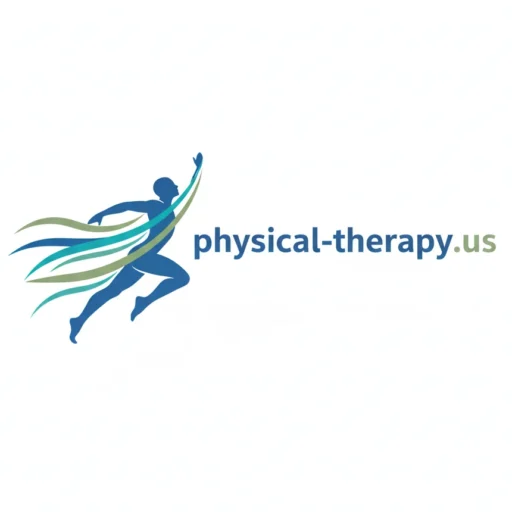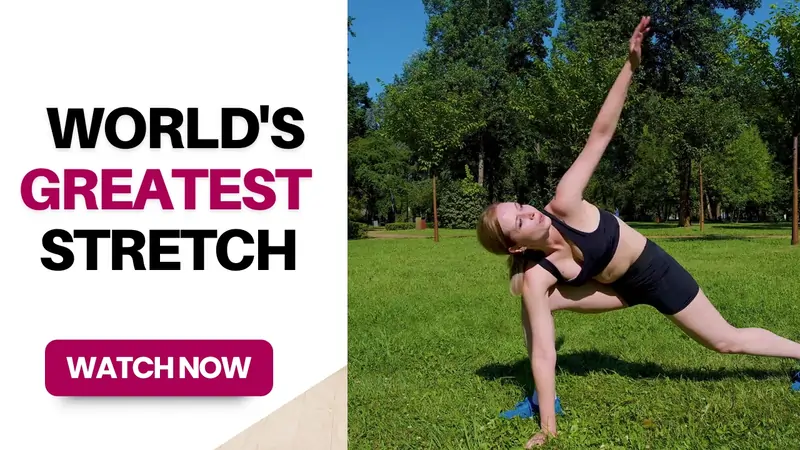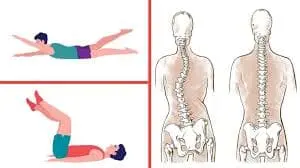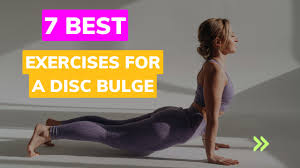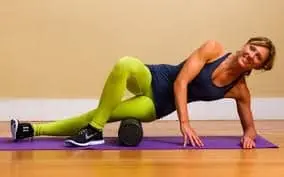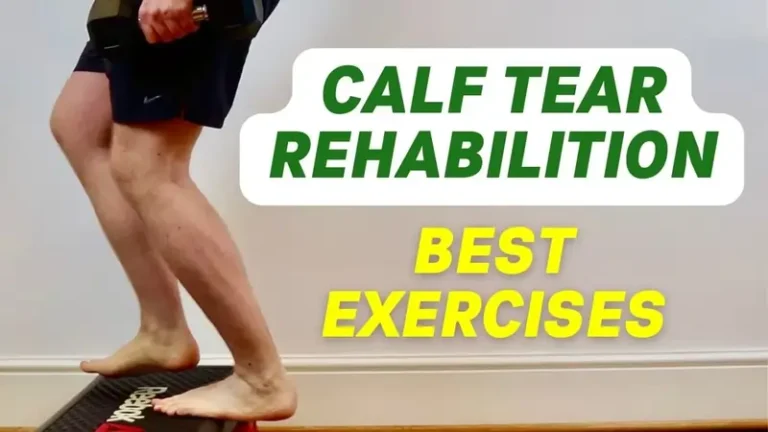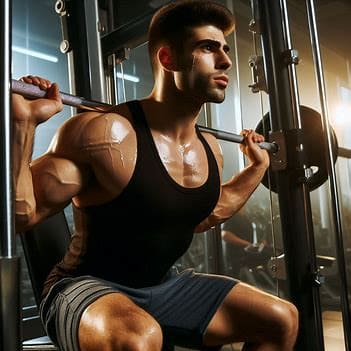World’s Greatest Stretch
Introduction:
The World’s Greatest Stretch is an exciting mobility exercise that is well-liked by athletes, fitness fans, and physical therapists. As the name suggests, it’s regarded as one of the best full-body stretches for improving mobility, flexibility, and body preparation for exercise.
As we age, we naturally lose strength, flexibility, and range of motion, which can lead to stiffness, pain, and an increased risk of accidents. Therefore, mobility is essential for both general longevity and long-term pain alleviation.
It is so popular because it takes less than five minutes to complete and works all of the body’s major muscles, particularly the ones we often neglect from spending all day at a desk or computer. Since it’s a dynamic stretch with static components, you may do it at the final moment of a session, as part of your dynamic warm-up, or to get your body ready for action.
By challenging the central nervous system, this movement and static posture combination creates the body-brain connection that is so important for a successful session. You maximize every activity and reduce your risk of injury when the link is formed because muscles fire correctly. Additionally, this movement coordination expands your range of motion, allowing you to fully perform each workout.
When performing the World’s Greatest Stretch, which muscles are used?
The primary muscles used:
- Quadriceps: The big muscles at the front of your leg are called the quadriceps. Your knee lengthens as a result.
- Lower Back: Your back can be extended, and you can stand up straight thanks to the erector spinae muscle, which runs along your spine.
- Glutes: It is necessary to move your leg back, stabilize the hip joint, and extend the hip.
Secondary muscles used:
- Upper Back: Upper back muscles that are helpful in shoulder movement as well as stability include the rhomboid and trapezius muscles. Along with helping with posture, they additionally pull the shoulder blades together.
- Deltoids: Its main purpose is for moving the arm forward, including forward elevation. It also makes it easier for the arm to rotate internally.
- Rectus abdominis and transversus abdominis give core stability.
- The erector spinae maintains the spine’s length.
Benefits of the World’s Greatest Stretch:
Gets the Body Ready for Sports Performance
- Before working out, this dynamic stretch improves neuromuscular preparedness.
- Perfect as a warm-up to get the body ready for HIIT training, jogging, deadlifts, and squats.
Dynamic Full-Body Mobility
- Works almost all of the major muscular groups, including the thoracic spine, hip flexors, glutes, hamstrings, shoulders, calves, and core.
- Improves the range of motion (ROM) of several joints, including the shoulders, hips, and spine.
Stretch and Mobility of the Hip Flexors
- Long periods of sitting can cause the hip flexors, particularly the iliopsoas, to tighten; this is what the deep lunge position does.
- Frequent practice improves hip flexion and extension, which increases performance in lifting, cycling, and running.
Calf and Hamstring Flexibility
- By increasing hamstring flexibility as you move into the hamstring stretch, you can improve leg control and stride length.
- Reduces the likelihood of hamstring strains and tightness.
- The calves may also be indirectly engaged by the stretch.
Increases Blood Flow and Lowers the Risk of Injury
- It helps improve circulation and oxygen delivery to the muscles because it is a dynamic movement.
- The likelihood of sprains, strains, and other soft-tissue injuries is decreased by preparing the muscles and joints.
Fixes Muscle Unbalances
- Encourages independent training by stretching and stimulating one side of the body at a time.
- Excellent for locating and correcting left-right strength or flexibility imbalances.
Mid-Back Thoracic Spine Rotation
- In sports like tennis, golf, and swimming that demand rotational motions, the spinal twist component improves thoracic rotation mobility, which is essential for athletes.
- Helps to improve posture and lessen stiffness in the upper back.
Improves Posture
- Opens up the shoulders and chest while activating the posterior chain, which includes the hamstrings, glutes, and spinal extensors.
- Helps in correcting bad posture caused by extended sitting or screen time.
Improves Activation of the Core
- Uses the core actively to keep the trunk stable during the movement, especially when bending and reaching.
- Improves neuromuscular control and general core strength.
Encourages Mobility and Healing Work
- To avoid post-workout tightness and restore normal joint ranges, apply it during cooldowns.
- Particularly helpful for those who need hip and spine decompression from heavy lifting or sedentary work.
World’s Greatest Stretch Video
How is the World’s Greatest Stretch performed correctly?
Here are some safety tips before you go in:
- You should be able to increase your range of motion a bit as you complete your repetitions.
- However, you run the risk of getting hurt if you push yourself too hard.
- Additionally, refrain from making sudden, bouncing motions.
- Instead, go slowly and carefully. Make sure the transition is painless at all times.
World’s Greatest Stretch:
- With your arms by your sides and your feet together, take a straight stance.
- As you stretch your rear leg into a deep lunge, lay both palms flat on the floor close to the inner of your instep.
- Your knee will be inside your elbow.
- You should keep your fingertips on the ground.
- Move your hips in the direction of the ceiling while keeping your hands on the floor.
- Lower your hips back into the deep lunge position and flex your quadriceps to keep your rear leg straight.
- With your hands flat on the floor, release the breath, turn your body, and extend the arm nearest your instep towards the ceiling.
- Then return to your neutral position.
- Then relax.
- Repeat these exercises 5 to 10 times.
World’s Greatest Stretch Variations:
You can add mobility and strength components or target particular regions with a variety of variations.
Knee-On-Ground Variation (Beginner-Friendly)
- To start, plant your left foot squarely on the floor.
- The knee remained on the ground, while the back leg extended behind.
- Put both of your hands on the front foot.
- You put your front foot down and drop it toward the surface of the ground.
- Hold this position for a few seconds.
- Use the same arm to spin your torso upward and reach your hand toward the ceiling after completing the elbow drop.
- Make every effort to expand your chest as much as you can.
- Hold this position for a few seconds.
- Put the hand back on the floor.
- As you straighten the front leg as much as you can, move your hips backward.
- Your toes should point upward when you flex your front foot.
- Make sure your spine remains straight as you lean forward from the hips.
- Lower the back knee.
- Move your hips forward carefully to extend the back leg’s hip flexors.
- To make the stretch more intense, you can optionally reach the other hand overhead.
- Then return to your neutral position.
- Then relax.
- Repeat these exercises 5 to 10 times.
- Change sides and repeat the whole process.
World’s Greatest Stretch With Hamstring Stretch
- One foot rests level on the ground.
- You stretched your back leg behind you, pressing your toes into the ground.
- The front foot has hands inside it.
- The elbow should be dropped towards the floor, within the front foot on the same side as the front leg.
- Open your chest and keep your hips low.
- Take a few seconds to hold this position.
- Raise the same arm off the floor and turn your chest outward.
- Hold the position for a few seconds.
- Move both hands on the ground.
- As you stretch your front leg, slowly move your hips back.
- While the heel remains down, the front foot flexes (toes up).
- Lean forward across the straight leg and bend at the hips.
- Hold the position for a few seconds.
- Then return to your neutral position.
- Then relax.
- Repeat these exercises 5 to 10 times.
World’s Greatest Stretch With Reach & Pulse
- Create a deep lunge by taking one step forward.
- You should place both hands on the ground over your front foot.
- Maintain a long spine and an active core.
- In the front foot, place it.
- Maintain a straight spine and low hips.
- Hold this position for a few seconds.
- Raise the same arm and turn your chest upward from the elbow-drop posture.
- Eyes following the hand, reach for the ceiling.
- This is the place where you begin pulsing.
- Raise and lower your reaching arm slightly.
- Pay attention to “opening and closing” the chest and upper back a little with each repetition.
- Put your hand back on the floor.
- Then return to your neutral position.
- Then relax.
- Repeat these exercises 5 to 10 times.
- Repeat the entire motion on the opposite side.
World’s Greatest Stretch With Foot Elevated on Yoga Block or Step
- On the floor, set a weight plate, a low step, or a yoga block.
- The right foot should be placed on the block a few inches above the floor.
- As you lunge deeply with your left leg, put your hands on the ground.
- Your left leg should be knee-off-the-floor and either straight or slightly bent.
- Hold the pose while lowering and extending your hips.
- The hamstrings are tense, and the posterior chain is stretched because of the lifted front foot.
- Rotate through the thoracic spine with your right arm as you reach it towards the ceiling.
- People watch your hand.
- Hold this position for a few seconds.
- The range can be extended by gently rocking forward and backward.
- Then return to your neutral position.
- Then relax.
- Repeat these exercises 5 to 10 times.
- Move to the left leg on the block after slowly exiting the stretch.
World’s Greatest Stretch With Resistance Band-Assisted
- The band should be looped around your left hip base.
- Pull the hip backward with a moderate amount of pressure as you move forward.
- Make a deep lunge with your right foot planted forward.
- Allow the band to help the back hip joint extend farther by lowering your hips.
- To add thoracic rotation, extend your right arm upward.
- Hold this position for a few seconds.
- Rock lightly back and forth if you’d like.
- Then return to your neutral position.
- Then relax.
- Repeat these exercises 5 to 10 times.
The Greatest Stretch in the World, Loaded (With Kettlebells or Dumbbells)
- Take a high lunge to begin.
- Maintain a strong core and a raised chest.
- Then lift the weight with your right hand.
- Make sure your left-hand stays supported by the floor or a block.
- Reach up towards the ceiling with the dumbbell or kettlebell as you rotate your body to the right.
- Hold this position for a few seconds.
- Then return to your neutral position.
- Then relax.
- Repeat these exercises 5 to 10 times.
When performing the World’s Greatest Stretch, what precautions should be taken?
Be mindful of any medical conditions.
Before trying, speak with a physician or physical therapist if you have any of the following conditions:
- Recent hip or knee surgery
- Severe lower back pain
- Herniated disc
- Problems with balance
- Joint replacements or severe osteoarthritis
Before the stretch, warm-up
- Without a warm-up, going into a deep dynamic stretch can cause cold muscles to get strained.
- Before doing this stretch, do three to five minutes of light exercise to get your cardiovascular system up.
Inhale Naturally and Deeply
- Your muscles may become abnormally tense if you hold your breath.
- Breathing control improves oxygen supply and flexibility.
Take Your Time with the Movements
- The purpose of the World’s Greatest Stretch is to increase mobility rather than assess strength or speed.
- To ensure that muscles and joints engage correctly, perform each movement carefully and cautiously, holding each position for a few seconds.
Adjust if you are injured or have limited mobility.
- The complete stretch may put excessive stress on your body if you have tight hips, poor balance, or knee or back problems.
A rough or slick surface should not be used for performance.
- Falls or sprains may occur as a result of slipping or instability.
- To be safe, place a non-slip yoga mat or exercise mat on a level surface.
Don’t stretch yourself too much.
- Excessive pushing, particularly during a dynamic stretch, might strain muscles or overstretch ligaments.
- The sensation should be one of stretch rather than pain.
Maintain a Neutral Neck
- Strain can result from twisting or overextending the neck when rotating.
Over Time, Increase Repetitions Gradually
- Injury or delayed onset muscle soreness (DOMS) can result from sudden intensity or overuse, even during a stretch.
- Start with two to three repetitions on each side and work your way up as your confidence and flexibility increase.
Preserve Correct Form
Weak form can raise the chance of injury and decrease performance.
Important Form Advice:
- Place the front knee over the ankle to begin in a high lunge stance.
- Extend your rear leg and curl your toes under for stability.
- Avoid collapsing or twisting suddenly when spinning; instead, maintain a long spine.
- When performing an active lunge, keep the hind leg off the ground unless you are altering it.
When should you stop performing the Greatest Stretch in the World?
It must be done mindfully, though, just like any other physical activity. A comprehensive, in-depth instruction on when to stop performing the World’s Greatest Stretch is provided below, along with warning signals and reasons to stop.
Constant Joint Pain or Clicking Noises
- You can have knee, shoulder, or hip popping or crunching with each repetition.
- This could indicate overuse or misaligned joints, which can get worse with repeated use.
Overuse or Weakness of the Muscles
- The muscles, particularly the shoulders, hip flexors, glutes, and core, may be weak or shaking.
- Stretching while fatigued can result in bad form, which lowers effectiveness and raises the risk of injury.
Pain While Stretching
- Muscle cramps or sharp, stabbing, or radiating pain in the knees, hips, shoulders, or spine.
- Pain is a sign that tissues are under more stress than is safe and could cause harm.
Existing Conditions or Injuries
- The stretch could worsen any previous hip, lower back, knee, or shoulder illnesses you may have.
- For recovering tissues, the stretch’s weight-bearing and rotational elements may be overly demanding.
Lightheadedness, nausea, or dizziness
- Experiencing lightheadedness, dizziness, or nausea during or following the stretch.
- Poor breathing, dehydration, or low blood sugar could be the cause of this.
Ineffective Methods or Weak Self-Control
- Unstable transitions, wobbling, or using the wrong muscle units to compensate.
- Apart from reducing the advantages, bad posture can also lead to pain, especially in the shoulders and lower back.
Physical or Mental Tiredness
- Lacking energy, being uninterested, or being afraid of the stretch when working out.
- Though forced repetition without participation might result in poor commitment or even anger towards mobility work, consistency is important.
When performing the World’s Greatest Stretch, what frequent mistakes should you stay away from?
It’s important to stay away from common mistakes that people frequently make throughout this period in order to get the full advantages and prevent harm.
Speeding Through the Motion
Completing the stretch too rapidly without maintaining each posture.
- Lessens the stretch’s effectiveness.
- Raises the possibility of muscle strains caused by a lack of control.
The Body Collapsing or the Back Rounding
- Hunching the shoulders or rounding the upper back are particularly common during the thoracic rotation phase.
- Makes the thoracic spine less mobile.
- Puts an excessive amount of strain on the neck and lower back.
Poor Form of Lunge
Allowing the back leg to sag with the knee contacting the floor, or allowing the front knee to bend inward or extend past the toes.
- Stresses the knee joint and reduces the beneficial effects of hip stretches.
- Stability and balance are affected by poor alignment.
Lack of Active Stretching or Reaching
Passive motion that does not include the use of muscles, particularly when performing a thoracic twist or arm reach.
- Reduces the benefits of mobility.
Not Using the Core
- Reduces control and stability.
- May lead to lower back pain.
Putting the hands or feet incorrectly
Hand placement is too short or wide; the front foot is too close or too far ahead.
- Affecting posture and balance.
- Lessens the hip and groin stretch’s effectiveness.
Summary:
This dynamic exercise is essentially the best stretch in the world. It is done in a deep lunge stance with one hand flat on the floor and the other turned wide towards the sky. By using the entire body, this action improves mobility and flexibility. Athletes and fitness lovers are particularly encouraged to perform this workout.
Touching the elbow or hand to the floor, placing the knee on the floor, or placing the hand on the shoulder are the most popular methods for performing this stretch.
By engaging the entire body, this action improves mobility and flexibility. Athletes and fitness lovers are strongly encouraged to perform this workout.
Remember that although this stretch is great for most individuals, it is not suitable for everyone. See your doctor first if you have any health issues or physical conditions.
FAQ:
What is the World’s Greatest Stretch?
Often referred to as the “World’s Greatest Stretch,” this vigorous full-body stretch works the spine, hamstrings, glutes, shoulders, and hip flexors, among other muscle groups.
Which muscles are stretched by it?
It is intended to:
Hip flexors (iliopsoas)
Hamstrings
Glutes
Thoracic spine (mid-back)
Adductors (inner thighs)
Calves
Shoulders and chest
The World’s Greatest Stretch: When Should I Perform It?
Before exercising, as a warm-up to increase blood flow and mobility.
During mobility exercises, make your joints more flexible and wide-ranging.
After extended durations of sitting, to ease tightness and stiffness.
Can beginners utilize the World’s Greatest Stretch?
Indeed, but beginners ought to:
Take it slow and mindfully.
Use supports or blocks if they are unable to touch the ground.
Prioritise form over depth.
What advantages does this stretch offer?
Improves hip motion
Increases the flexibility of the spine
Enhances the shoulders’ range of motion
Engages the core muscles
Improves balance and coordination
Helps in avoiding injury
Can lower back pain be alleviated by it?
Yes, particularly if the pain is caused by limited spinal or hip motion. However, if the ache gets worse while stretching, stop and see a doctor or physical therapist if you have persistent back pain.
What common mistakes should one avoid?
Rushing the motion
Not engaging with the core
Allowing the front leg to drop downward
Rotating the spine excessively
Holding your breath in
Do I need to warm up first?
Although it’s a warm-up, a quick general warm-up, such as arm circles or walking, might intensify the effect, particularly for cold or stiff muscles.
References:
- Admin. April 18, 2023. The longest stretch in the world. Spinal Group and Sports. The greatest stretch in the world: https://www.sportsandspinalgroup.com.au/
- January 1, 1970; Mazzo, L. Why (and how) we adore the longest stretch on the planet. Onepeloton.com/blog/worlds-greatest-stretch
- The world’s biggest span, Ringe, D., January 2, 2025. https://dieringe.com/exercises/worlds-greatest-stretch DIE RINGE
- Iris “The world’s longest stretch.” (n.d.). The world’s biggest stretch: https://www.equinox.com/articles/2013/04
- On June 19, 2025, CPT J. M. and CPT C. S., What is so incredibly awesome about the world’s longest stretch? Oneself. [Story: The Greatest Stretch Benefits in the World]
- Fata-Chan, A. February 14, 2025. According to a fitness guru, this stretch is the “best for longevity,” so do it daily to keep your body looking fresh. CNBC. The fitness trainer shamefully claims that the best stretch for longevity and aging is https://www.cnbc.com/2025/02/14/the-best-stretch-for-longevity.html.
- Here are some reasons to perform the “greatest stretch in the world” daily. 15 July 2021. Today.com. Today’s tips for performing the longest stretch in the world (t225495) Today’s Health http://www.today.com
- June 22, 2023: Song, D. The finest stretch in the Modified World—rehab hero. Hero in Rehab. The exercise is found at https://www.rehabhero.ca/exercise/iz72dsnpxhy4pblhyim6xxoc6sf15h.
- Image 1, On November 14, 2023, CPT A. M. W. and CPT C. S. After your next strength training session, try these 13 upper-body stretches. Oneself. https://www.self.com/gallery/stretches-for-the-upper-body
